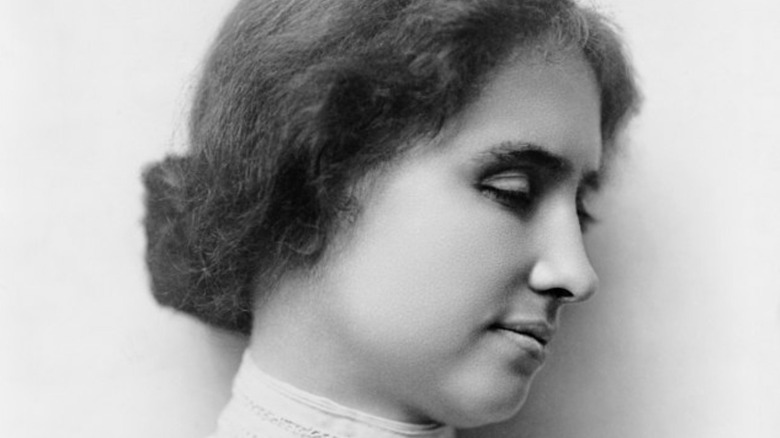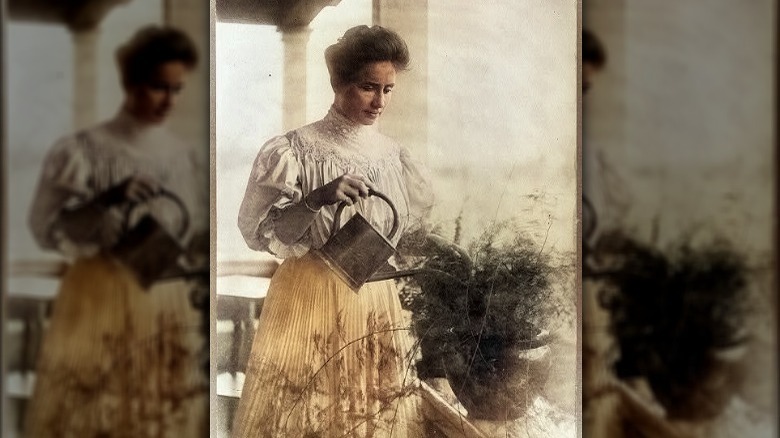This Colorized Photo Will Change How You Look At Helen Keller
While most people know of Helen Keller through the story "The Miracle Worker" — which chronicles her meeting with her lifelong friend and teacher, Annie Sullivan, and how Sullivan helped the seven-year-old deaf and blind Keller finally communicate with the outside world — there is so much more to Keller than her disabilities. In her 88 years, she was a suffragist, an untiring advocate for civil and human rights, especially for protections for the blind, deaf, and the disabled. She was also one of the founding members of the American Civil Liberties Union (ACLU), along with being one of the first in support of the National Association for the Advancement of Colored People (NAACP), according to Time.
Keller became close friends with many leaders of her day, including Franklin D. Roosevelt. The Perkins School for the Blind notes she met almost met "nearly every U.S. president to hold office in her lifetime." She also had close friendships with a number of notable figures including Alexander Graham Bell, Mark Twain, and Thomas Edison. Yet, despite her long life, worldwide celebrity, and extensive accomplishments, there are some private aspects to Keller that are less well known.
Her garden was her respite and her joy
When Keller died in 1968, thousands of pictures had been taken of her. However, the most well-known are not in color, and often portray her seriously, working with Sullivan, reading books in Braille, or meeting with well-known figures. But the colorized photo above shows an almost wistful Keller in an elaborately detailed shirt, and light yellow pleated skirt, watering a frothy green plant in front of her, and it tells a story few know: her love of plants.
Keller was an avid gardener, and her garden at her home became her sanctuary. In an article in 1930 for Better Homes and Gardens, Keller stated, "My garden is my greatest joy. I feel that I am in the seventh heaven when among my plants (via the American Foundation for the Blind). Partly it was because of their scent, but it was more than that.
"I really like no flowers without fragrance, as fragrance is their soul, to me. As color is to the eye, so is fragrance to me my way of recognizing them. Also, I feel them, their form, shape, stem, even their pistils."
For Keller, her garden was her way of connecting to both the outside world and to a higher power. As she wrote in her book "Light in Darkness," "And I believe that God is in me as the sun is in the color and fragrance of the flower, the Light in my darkness, the Voice in my silence."

